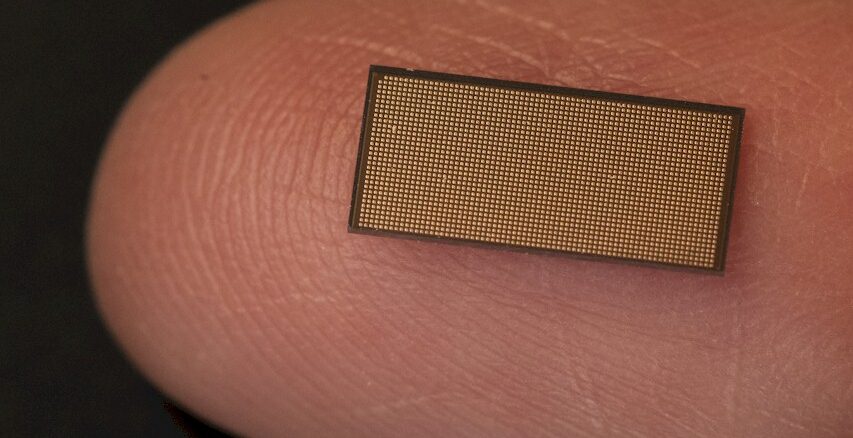
Not many devices in the datacenter have been etched with the Intel 4 process, which is the chip maker’s spin on 7 nanometer extreme ultraviolet immersion lithography. But Intel’s Loihi 2 neuromorphic processor is one of them, and Sandia National Laboratories is firing up a supercomputer with 1,152 of them interlinked to create what Intel is calling the largest neuromorphic system every assembled.
With Nvidia’s top-end “Blackwell” GPU accelerators now pushing up to 1,200 watts in their peak configurations, and require liquid cooling, and other accelerators no doubt following as their sockets get inevitably bigger as Moore’s Law scaling for chip making slows, this is a good time to take a step back and see what can be done with a reasonably scaled neuromorphic system, which not only has circuits which act more like real neurons used in real brains and also burn orders of magnitude less power than the XPUs commonly used in the datacenter for all kinds of compute.
Next-generation computing architectures are something we obviously keep an eye on here at The Next Platform, just in case a particular flavor of dataflow engine, neuromorphic processor, or quantum computer advances sufficiently to work at scale on real-world workloads. We have been keeping an eye on the TrueNorth effort by IBM, which is derived from work that Big Bluedid with the US Defense Advanced Research Projects Agency, the Akida neuromorphic processor from BrainChip, the memristor-based and synaptic-inspired storage of Knowm, and of course the Loihi 1 and Loihi 2 family of chips from Intel.
It is the Loihi 2 neuromorphic processor that is at the heart of the new Hala Point system that is at Sandia being put through its paces to see how it can be applied to various artificial intelligence workloads and how this compares to AI approaches based on CPUs, GPUs, and other compute engines. Sandia likes to test put new architectures, given that this is one of the mandates of the national HPC labs around the world.
The first Loihi neuromorphic chip from Intel Labs, the research arm of the chip maker, was launched in September 2017 and appeared in the Pohoiki Beach system, which had 64 of these Loihi 1 processors linked to each other, in July 2019. At the time, Intel said that the Loihi 1 chip, which implements a spiking neural network architecture like the fatty tissue you carry around in your noggin, was roughly equivalent to 130,000 neurons and 128 million synapses. Intel eventually scaled up a system called Pohoiki Springs that had over 800 Loihi chips linked together and provided over 100 million neurons for AI models to make use of. (A human brain has about 100 billion neurons, or a factor of 1,000X more, just for context.)
The Pohoiki Beach and Pohoiki Springs machines were made available out of Intel Labs to hundreds of AI researchers and has not yet been commercialized. And neither will be the Hala Point system based on the second-generation Loihi 2 neuromorphic processor, which was announced in September 2021. But it is at least going into Sandia, which has created a tool called Whetstone that can convert various kinds of convolutional neural networks running on CPUs and GPUs to spiking neural networks running on machines like those based on the Loihi and Loihi 2 chips.
By shifting to the Intel 4 process, the Loihi 2 chip could be roughly half the area of the Loihi 1 and have the same number of neuron cores, 8X more neurons at 1 million, and nearly the same number of synapses (123 million) as the Loihi 1. Here are the speeds and feeds of the two chips:
And here is a block diagram of the Loihi 2 chip for your review:
The number of embedded processor cores on the Loihi device, which are programmed using C or Python and which are used to encode and decode data used by the spiking neural network software, was doubled up to six from three on the Loihi 1.
Which brings us up to Hala Point. With 1,152 of these Loihi 2 chips, the cluster of machines now at Sandia has 140,544 neuron cores and 2,304 host X86 cores. Those neuron cores implement 1.15 billion neurons, which is about 1 percent of what the human brain has and roughly equivalent to the brain of an owl. This Hala Point machine has a total of 138.2 billion synapses.
That is about a factor of 10X more brain power than the Pohoiki Springs machine that researchers around the world were playing with for the past two years.
There are a dozen cards in the Hala Point server nodes, and each card includes six Loihi 2 compute complexes with eight Loihi 2 chips each. That’s 48 Loihi 2 chips per card and that works out to 576 Loihi 2 chips in a 6U rack mounted enclosure. So this supercomputer, which burns a mere 2,600 watts, fits in 12U of a 42U rack.
Hala Point is able to process 380 trillion synaptic operations per second and 240 trillion neuron operations per second and has an aggregate memory bandwidth of 16 PB per second. Running sparse deep neural networks at 8-bit data resolution, this 12U system can do an equivalent of 20 petaops of crunching at a power efficiency of 15 teraops per watt.
Why stop there? A mere 174 of these 6U enclosures – a mere 87X increase in computing power over the Hala Point system – would have the same number of “neurons” as the human brain.
The fun bit is the human brain burns about 20 watts, and those 174 enclosures would burn 226.2 kilowatts of juice, or about 11,310X that of the brain. Such a 100 billion neuron cluster of Loihi 2 chips would take up 25 racks of space, which is 1.55 million cubic inches of space compared to the around 80 cubic inches of the average human brain. The brain is 19,350X more space efficient than such a cluster of Loihi 2 chips could be.
Here’s the funner bit: If Moore’s Law could double chip density every two years without any effort, it would only take 34 years to match the brain on space efficiency and only 27 years to match the brain on energy efficiency. 3D stacking, which is absolutely possible with the Loihi chips, would shorten that time perhaps and make a more reasonable compute complex.
We have a more interesting question: What happens if you could make a simulated human brain with 1 trillion simulated neurons, or 10 trillion simulated neurons, instead of real human brain with 100 billion real neurons? Would it be “smarter,” whatever that means?
If we survive this current extinction-level event, rest assured of one thing: Someone will try to answer those questions. And it may not take all that much money to do it. This sounds a lot cheaper than trying to do it with heaven only knows how many GPUs. . . .

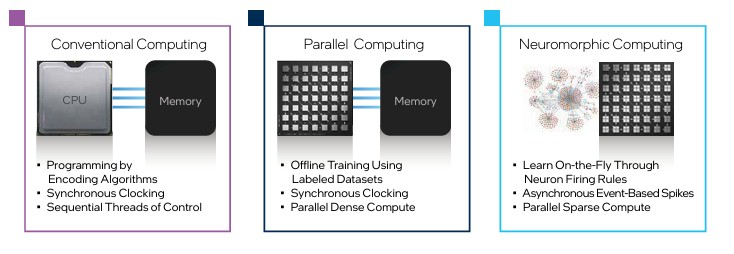
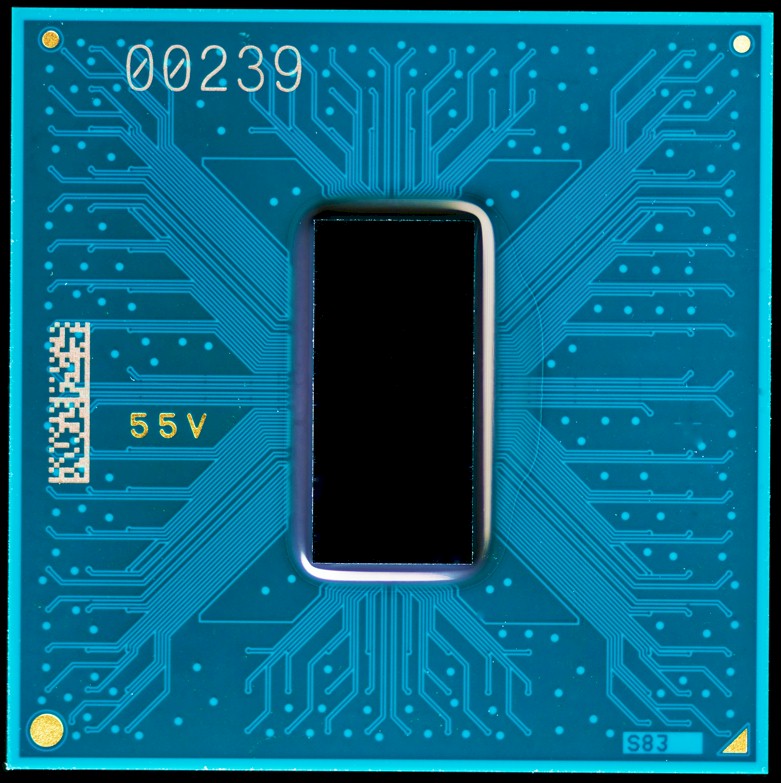
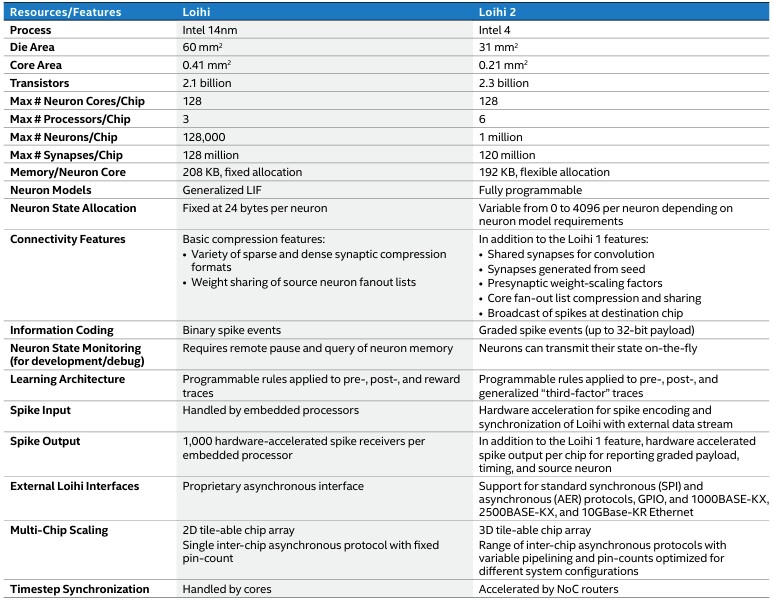
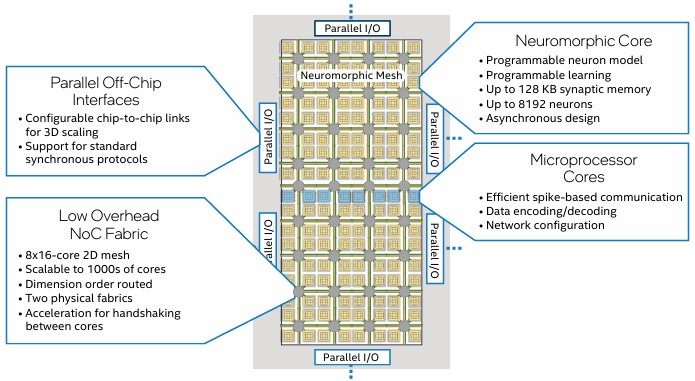
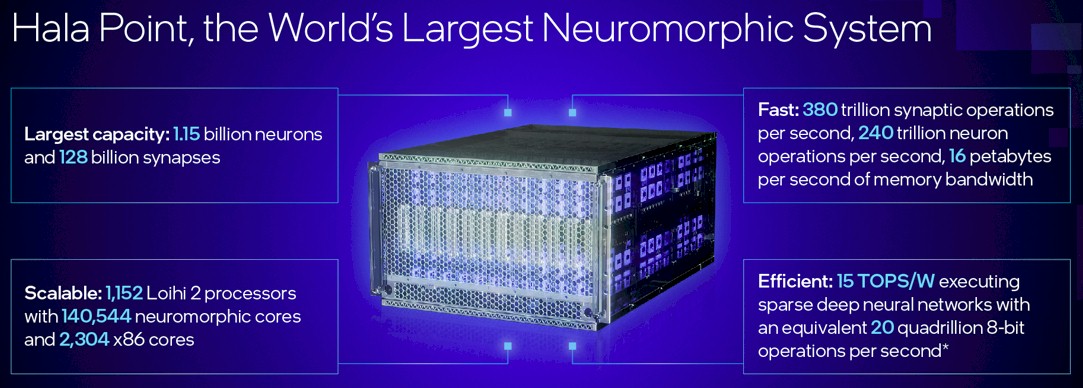
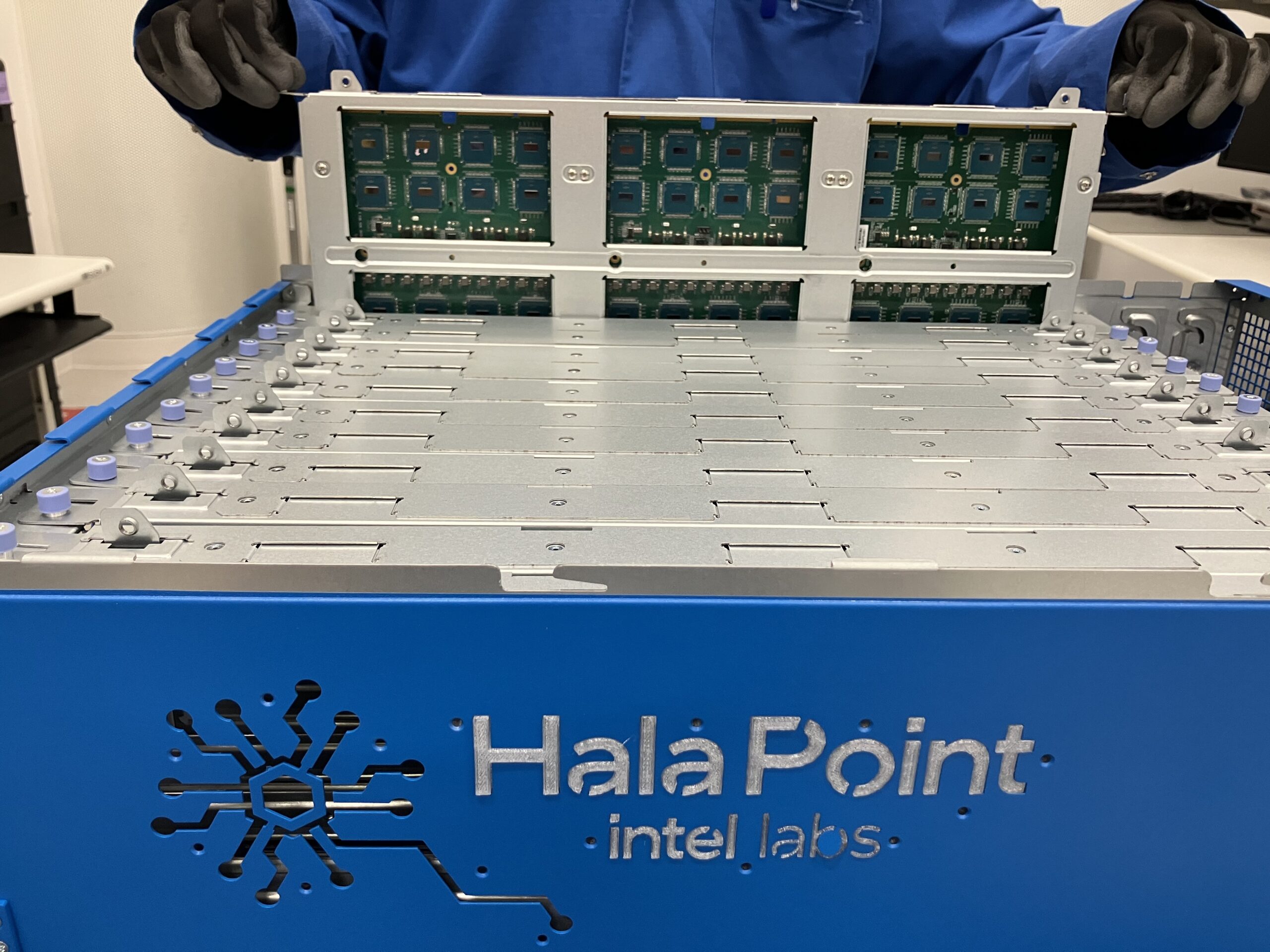

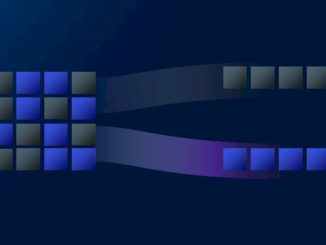

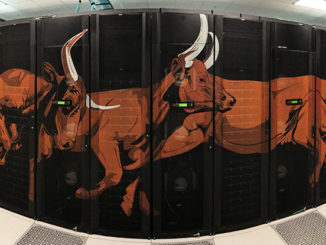
>> 1,200 cubic inches of the average human brain
A minor correction but the human brain is about 1.2L or 1200cm^3 (not 1200 cubic inches). Another example of metric to imperial errors.
https://en.wikipedia.org/wiki/Brain_size
I searched for cubic inches and didn’t not the answer had different units. So yes, a metric to imperial error. But more dyslexia than anything else. Anyway, it is all fixed. Thanks.
Interesting article! Spiking Neuron Networks (SNN) are quite fascinating in their analog neuromorphic nature with in- or near-memory dataflow-like positioning. If I understand it, the basic units implement Leaky or Exponential Integrate and Fire (LIF or EIF) neuronal models (with some correspondance to Hodgkin-Huxley) in hardware, along with some possible reward plasticity (for learning, in feed-forward mode), in some asynchronous connectionist arrangement (synapses, with no master clock).
I’m glad Sandia is testing this tech with Hala Point’s Owl-brain-sized 12U system, which Intel bills as the “World’s Largest”. It should help identify strengths and weaknesses, as needed before scaling it 87x to reach “human size” IMHO. Also, although memristors may not quite yet have panned out as viable silicon fo such neuromorphs, it seems that sub-threshold transistors might be just the ticket (eg. Figs 2 and 3 in this 2023 paper: https://www.nature.com/articles/s41699-023-00422-z ). Fascinating!
“We have a more interesting question: What happens if you could make a simulated human brain with 1 trillion simulated neurons, or 10 trillion simulated neurons, instead of real human brain with 100 billion real neurons? Would it be “smarter,” whatever that means?”
->Will not be smarter nor better in any way, as the human brain is designed by God, but chips by humans with errors in their thinking, as all the patches, updates and CVEs prove (…and hallucinating answers from current AIs).
Let’s see if God lets this happen or end it like with the babel tower.
It’s a Tower of Babel, alright.
Yes, it is. And the end of the story some thousand years ago was, that nobody was understanding each other anymore and the great project ended.
It is already starting and happening: My trust in everything written, especially on the net, is already decreasing faster than in the past, as it is known that text parts are generated by AI, which hallucinates and has deep failures…same for pictures and videos…trust will decrease…mistrust increase…
The next step for burying it are over-enthusiastic people like Huang or Keller. As already commented here somewhere, about what will happen, when (made by erroneous people) erroneous AI will make erroneous code…the ending of this is clear.
Same, as already commented here somewhere, what happens to people’s knowledge and thinking, when more and more outsourcing the brain to machines…it will decrease…by this, the next developers of hard- and software will make even more mistakes as being more erroneous itself any relying more on AI being also more erroneous…it is a perpetuum mobile to destruction…it drives itself downwards…sawing the branch you are sitting on…
God has time and gives time to turn, as he decides what we know and what not.
Psalms 94:10 …even he who gives knowledge to man?
The bad thing is, that really some people believe in AI, IT,…they really believe what they say about AI…
Psalms 2:4 Then he whose seat is in the heavens will be laughing: the Lord will make sport of them.
And even worse: It is God himself who does this, for don’t believing the truth (his word and his son, the only saviour who paid for our sins):
2 Thessalonians 2:11 And for this cause God shall send them strong delusion, that they should believe a lie:
That’s the worst thing one can happen: Being on the wrong way, but really thinking being on the right one.
Rain AI are to supply Open AI (creators of chatgpt) with $51 million of neuromorphic chips. Their near turn goal is to develop a neural network of such density and complexity to match the same number of “neural”-components and connections as the human brain within the next 5 years.